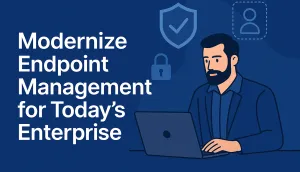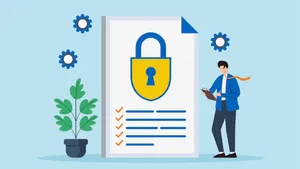Beyond reactive security: why continuous mobile device monitoring is essential
To combat the ever-growing landscape of mobile threats, organizations can shift from a reactive to a proactive security posture by implementing continuous auditing and monitoring. Read to learn how.
The threat landscape is constantly shifting and evolving. According to Kaspersky, bad actors launched an average of 2.8 million malware, adware or unwanted software attacks per month on mobile devices in 2024. That’s over 90 thousand per day.
There’s no denying it: mobile devices are popular targets for attackers.
85% of organizations say mobile device attacks are on the rise.
Verizon found 75% of organizations increased mobile device security spending in the past year. Organizations aimed to respond to these increased attacks, and address the increase in employee mobile use.
Yes, cyber threats are increasing. But not all hope is lost. Verizon discovered that following these best practices make a big difference:
-
Mobile device management (MDM) and unified endpoint management (UEM)
-
Mobile threat defense (MTD)
-
Zero trust
-
Secure access service edge
-
Secure enterprise browser and secure web gateway
-
Endpoint detection and response (EDR)
-
Managed detection and response (MDR)
-
Cyber risk quantification
How big of a difference? Of all organizations in Verizon’s survey, 46% experienced a breach that caused system downtime. But if you follow all eight best practices? This number decreases by 22 percentage points. These organizations also enjoy a decrease in major repercussions from breaches, at a 51 percentage point reduction.
Obviously, following these best practices is not as easy as it sounds. But there’s a common thread that ties several of them together: proactivity. MDM helps you enforce configurations and restrictions to harden your endpoints. Zero trust and other network configurations protect your network and prevent lateral movement. Quantifying your cyber risk helps you understand the impact of cyber threats before they happen. Tools like EDR and MDR aid in finding and responding to threats before they have a major impact.
With attackers constantly deploying the latest threats (over 90 thousand a day!), it isn’t enough to be reactive — you’ll always be falling behind. While we won’t talk about all eight of these best practices in this blog, we’ll explore concrete ways organizations can use continuous monitoring and continuous audits to be proactive about their security. This helps teams quickly identify and respond to issues before they lead to downtime and data loss.
Why continuous audits and monitoring?
Regularly scheduled audits are important, no doubt. They help you find vulnerabilities, assess risk, update your processes and maintain compliance with internal and external standards. But a lot can happen between these audits. Devices and users get added or removed. Some users may change roles and therefore permissions. Not to mention that new cyber threats are invented every single day.
If you are constantly monitoring your device fleet’s behavior and auditing your processes, you have a fighting chance to keep up with evolving threats. Add automation to your analytics and real-time telemetry, and you maintain visibility, strengthen security and improve your compliance state. This doesn’t just keep devices and data secure; it helps maintain continuity and to get the most value from your devices.
Implementing continuous auditing and monitoring
There are a few capabilities you have to have in place before implementing continuous auditing and/or monitoring.
Device configuration and management
To even begin, you need to know what device you’re monitoring and the status they should be in. With Mobile Device Management (MDM), you can configure devices by configuring:
-
App installation and updates
-
Certificates and profiles
-
Operating system updates
-
User and location information (with identity/directory integrations)
-
Security restrictions and policies
Real-time inventory and visibility
After you’ve set up your devices, you have to monitor that they’re meeting your standards. Adding EDR, MDR and/or a security information and event management (SIEM) platform into your stack will give you insight into what happening with your endpoints and help identify malicious activity. For best results, you’ll need deep visibility into OS-specific behaviors and threats. With this telemetry, you’re more prepared for audits — whenever they happen.
Combine this with your MDM and you can start aligning your devices with regulatory frameworks and data protection mandates like NIST, HIPAA, PCI DSS and GDPR. If a device is running vulnerable software, isn’t meeting passcode requirements, exhibits suspicious behavior and so on, you can automatically detect the problem.
Remediation and response
And that leads us to remediation. Remediation is a big boon of continuous monitoring and auditing. Being able to address a concern, whether it’s a cyber attack or closing a security gap, is the only way to stay on top of ever increasing threats.
Continuous monitoring and auditing helps you assess risk by paint a picture of your device health and threat exposure. And you can begin to identify and close potential gaps in your security posture.
The global average cost of a data breach is 4.44 million USD, according to the IBM 2025 Cost of a Data Breach Report. But with security analytics and threat intelligence, your cost goes down. Add AI-driven and machine-learning-driven insights, and your cost goes down even further.
Beyond monetary costs, with a proactive strategy, you get less down time and (ideally) fewer support tickets. If devices stay heathy, especially when their compliance is continually monitored and automatically remediated, employees can stay productive and data can stay safe.
There’s more to learn. Find out how your employees can stay productive on the go — while keeping your company data safe.



